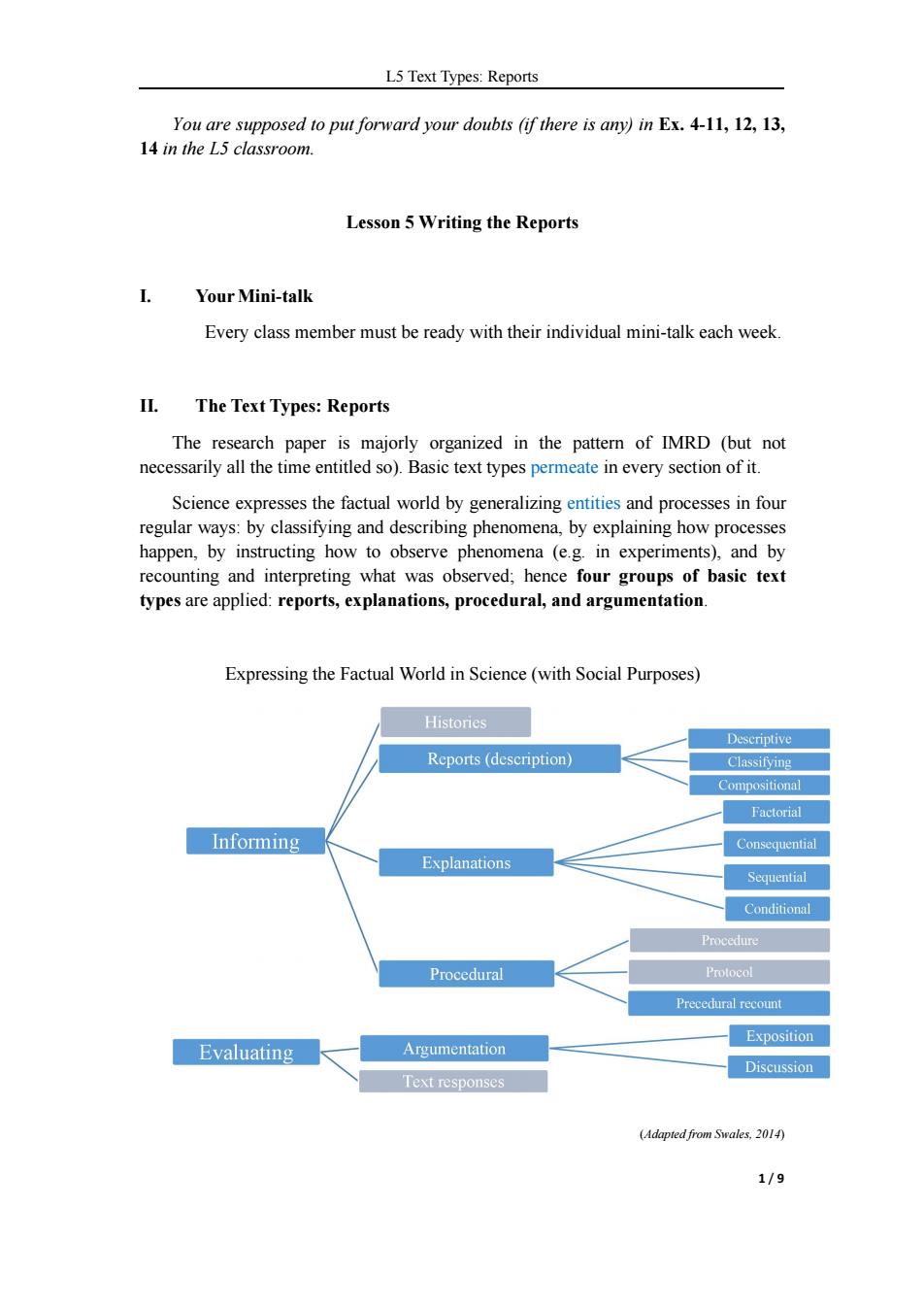正在加载图片...

L5 Text Types:Reports You are supposed to put forward your doubts (if there is any)in Ex.4-11,12,13, 14 in the L5 classroom. Lesson 5 Writing the Reports I. Your Mini-talk Every class member must be ready with their individual mini-talk each week. II.The Text Types:Reports The research paper is majorly organized in the pattern of IMRD (but not necessarily all the time entitled so).Basic text types permeate in every section of it Science expresses the factual world by generalizing entities and processes in four regular ways:by classifying and describing phenomena,by explaining how processes happen,by instructing how to observe phenomena (e.g.in experiments),and by recounting and interpreting what was observed;hence four groups of basic text types are applied:reports,explanations,procedural,and argumentation. Expressing the Factual World in Science (with Social Purposes) Histories Descriptive Reports(description) Classifying Compositional Factorial Informing Consequential Explanations Sequential Conditional Procedure Procedural Protocol Precedural recount Exposition Evaluating Argumentation Discussion Text responses (Adapted from Swales,2014) 1/9L5 Text Types: Reports 1 / 9 You are supposed to put forward your doubts (if there is any) in Ex. 4-11, 12, 13, 14 in the L5 classroom. Lesson 5 Writing the Reports I. YourMini-talk Every class member must be ready with their individual mini-talk each week. II. The Text Types: Reports The research paper is majorly organized in the pattern of IMRD (but not necessarily all the time entitled so). Basic text types permeate in every section of it. Science expresses the factual world by generalizing entities and processes in four regular ways: by classifying and describing phenomena, by explaining how processes happen, by instructing how to observe phenomena (e.g. in experiments), and by recounting and interpreting what was observed; hence four groups of basic text types are applied: reports, explanations, procedural, and argumentation. Expressing the Factual World in Science (with Social Purposes) (Adapted from Swales, 2014)